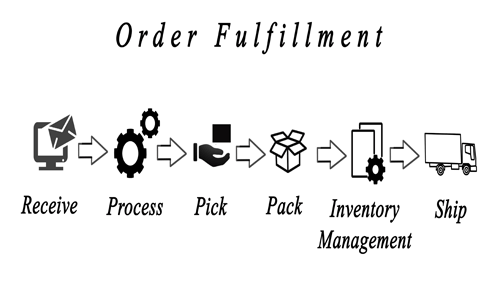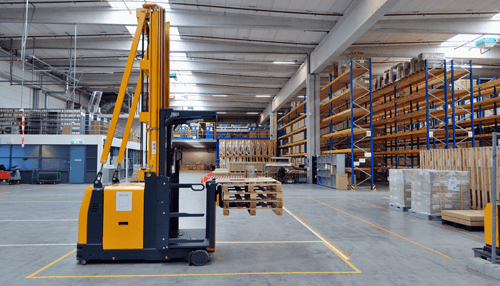Order fulfillment processes have gained a lot of popularity over the past few years. Perhaps the biggest driving factor that has led to many companies adopting this technique is the ever-evolving customer demands. Consumers are always looking for a service provider that can meet their demands as quickly as possible. If you’re able to meet these requirements, then you’re likely to succeed in the market.
So, what is order fulfillment process? This refers to the stages that a product takes from the moment it’s ordered by the consumer to when the delivery is done. Depending on the service provider and the companies involved, there are various steps that can be acknowledged or ignored. This article aims to cover all the basic stages that you can expect in an order fulfillment process.
1. Receiving Inventory
The first step in the order fulfillment process is the acceptance of products from the manufacturer or the company looking to send the items to respective customers. Normally, an enterprise has two main ways of handling the inventory. It can either stock the products within its premises or send them to an order fulfillment provider to handle any related tasks.
Of course, both options are applicable, but using an external contractor is always advisable regardless of the size of your company. So, once a customer orders for a given product, the order fulfillment organization will receive the products from the concerned company. They’ll also make sure that all the necessary details are attached to each item to avoid confusion along the way.
2. Inventory Storages
Once the inventory has been received, it’s upon the organization to make sure that the inventory is kept safe from any damages. Apart from safety purposes, storing the inventory in an organized manner ensures that the delivery process is efficient and saves on time. The order fulfillment will also be accurate given that every client’s address and expected time of delivery is well-stipulated in the order details.
For everything to work as expected, it’s always recommended that the responsible organization stores the products by SKU (stock keeping unit). This is done in separate bins so that it can be easier and quicker to find, pick, and pack each product whenever required.
3. Order Processing
Of course, if you’re outsourcing the order fulfillment process, you don’t need to go into the nitty-gritty of what it entails. However, these service providers need to process the products before delivering them to the desired clients. As earlier stated, storing the inventory in an organized warehouse saves time when picking the orders. In addition, it cuts on the overall cost of order fulfillment, given the fact that there will be fewer resources and time required to complete this stage of the order fulfillment process.
So, what does order processing entail? Well, this involves picking the inventory off the shelf or the storage facility and prepared for shipping. Once everything is in place, the products are then transported to the packing station, where they’re then inspected for any possible damages. Finally, they’re moved to the offices of selected carrier service providers who will then transport them to the clients.
4. Shipping
The shipping process isn’t as straightforward as you’d expect, especially if you’re dealing with varying order sizes. Smaller ones are easier to handle because the shipping method is normally readily available. However, for bigger orders, a third-party contractor might need to be brought in to fulfill this step.
5. Handling Returning
This is the final stage of the order fulfillment process, but it’s only applicable in cases where the client is not happy with the items. As a company, you’ll need to devise a clear policy stating when a product can be accepted back once delivered to the customer. It’s always advisable to automate the return management process in such a way that the customer’s feedback can be quickly accessed by your staff. This way, you’ll avoid any chaos that may arise, especially if there’s no proof of damages before delivery.
Conclusion
Order fulfillment is a process in which every company, especially manufacturers, must invest heavily. The best option is to contract a specialized organization to handle all the stages, including receiving and storying the inventory, processing the orders, shipping the items, and handling any related returns. If you’re the manufacturer, it can be quite tricky to fulfill all these stages with utmost accuracy while handling other projects within your company. It’s worth noting that each step in the fulfillment process is significant for customer service and business growth.



